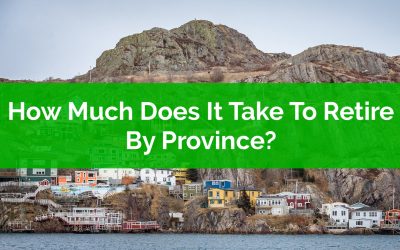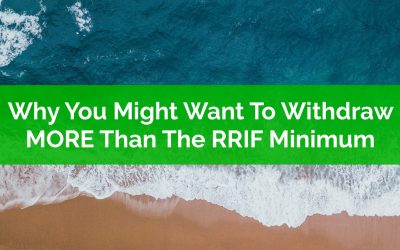Thank you for joining the waitlist!
You’re on the list for early access!
We will contact you via email when we’re ready for you to start your self-directed financial plan. In the mean time here is a quick preview…
Check out our latest blog posts…
Don’t Get Surprised By OAS and CPP Survivor Benefits
For many people, CPP and OAS will make up a significant portion of their retirement income. A reduction in CPP and OAS income due to CPP survivor benefits or OAS survivor benefits can be very stressful. Even more so because this reduction will follow the unexpected death of a partner or spouse.
Many people may not realize, but OAS and CPP survivor benefits are reduced by anywhere from 40% to a full 100%!
For higher income households, who may have significant assets in either RRSPs or TFSAs, it’s not uncommon for CPP and OAS to make up 25%-30% of their retirement income.
For lower and moderate-income households, government pensions like CPP and OAS can provide 50%-75% of their retirement income.
For very low-income households, CPP and OAS, when combined with other low-income benefits like GIS, can easily make up 100% of retirement income for some couples.
In all of these situations, losing even some of these benefits can result in a big change to retirement plans, and what many people may not realize is the extent to which some of these benefits can be reduced when a partner passes away.
Although difficult and unpleasant to even think about, the impact of a partner’s death is an important consideration for many retirement plans. It’s important to understand what changes there might be to both retirement income and retirement spending if the unfortunate were to happen.
For some plans, those which have a large amount of investment assets, the risk is much smaller. Investment assets inside RRSPs and TFSAs can be transferred through spousal rollovers with no tax consequences. So, the disruption to these plans may be smaller.
But for some plans, the change in CPP and OAS income due to an unexpected death can be quite large, especially in certain circumstances. In the worst-case scenario, the loss of CPP and OAS combined can easily represent more than $20,000 per year in lost retirement income!
Here’s what to watch out for when it comes to CPP survivor benefits…
How Much Does It Take To Retire By Province?
Planning for retirement is all about spending. Spending impacts almost everything about a retirement plan. More spending means more withdrawals and more taxes. Less spending means less withdrawals and less taxes.
More spending could mean there is a higher risk of running out of money. Less spending could mean that we need to be careful around estate planning because there may be a large amount of assets being passed on.
But spending needs to be supported by investment assets, so how much do we need to have invested? How much does it take to retire?
In this post, we’re going to take an interesting look at this question. We’re going to look at how much we need to retire depending on the province we live in. We’re going to look at how much you need to have invested to support the same retirement spending.
Disclaimer: Nothing in this post should be considered financial planning advice. We’re going to use averages and province wide tax rates with only general deductions. Because we’re all unique in some special way, the numbers in this post won’t apply to you, but the relative amount you need to have invested between provinces is interesting!
Why You Might Want To Withdraw MORE Than The RRIF Minimum
At some point every person with an RRSP is going to need to make a decision about converting their RRSP to a RRIF. The Registered Retirement Income Fund (RRIF) works very similarly to the RRSP with a couple notable exceptions.
One of those exceptions is that there is a minimum RRIF withdrawal each year. Retirees need to make this minimum withdrawal from their RRIF each year and this minimum will slowly increase from year-to-year. The RRIF minimum will escalate each year as a retiree gets older. By the time a retiree reaches their mid-90s they are forced to withdrawal 20% of their RRIF each year!
Because the withdrawal is a minimum, and conversion from a RRSP to a RRIF is mandatory, this often leads people to believe that keeping money in a RRIF is a good idea. After all, if they’re being forced to take money out, wouldn’t that suggest that keeping money in is a good idea?
For many people, taking out only the minimum RRIF withdrawal each year is actually a bad idea. Many people would benefit from a different RRIF withdrawal strategy. Many people would benefit from taking out more than the minimum each year. They would increase their financial flexibility, they would decrease the tax on their estate, and they could even qualify for certain benefits late in retirement.
In this post we’ll look at RRIF withdrawal rules, the minimum RRIF withdrawal percentage by age, and we’ll explore two scenarios where we show how a retiree can benefit from RRIF withdrawals that are larger than the minimum.
We’ll also explore how this strategy is even more impactful after a large stock market correction.



